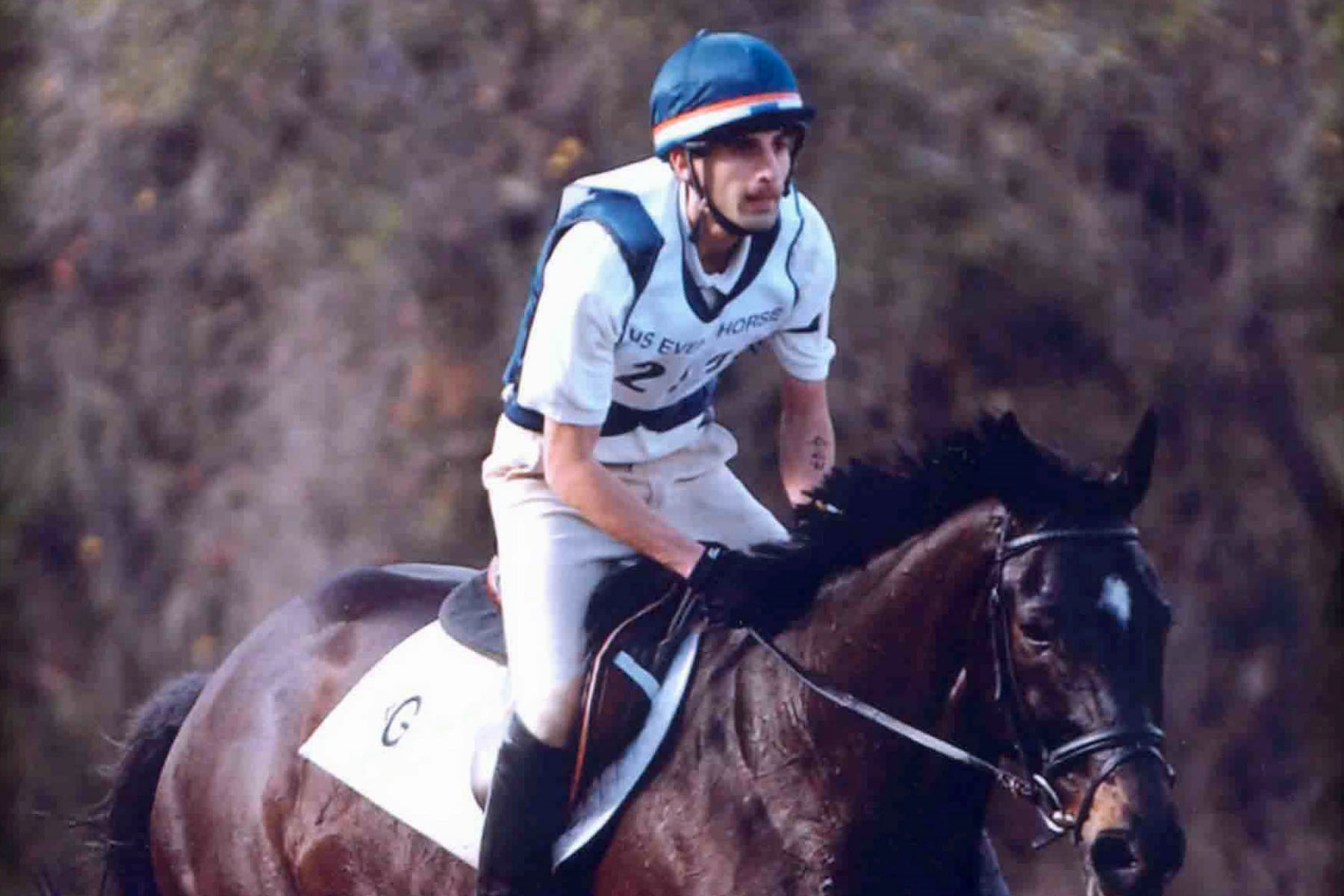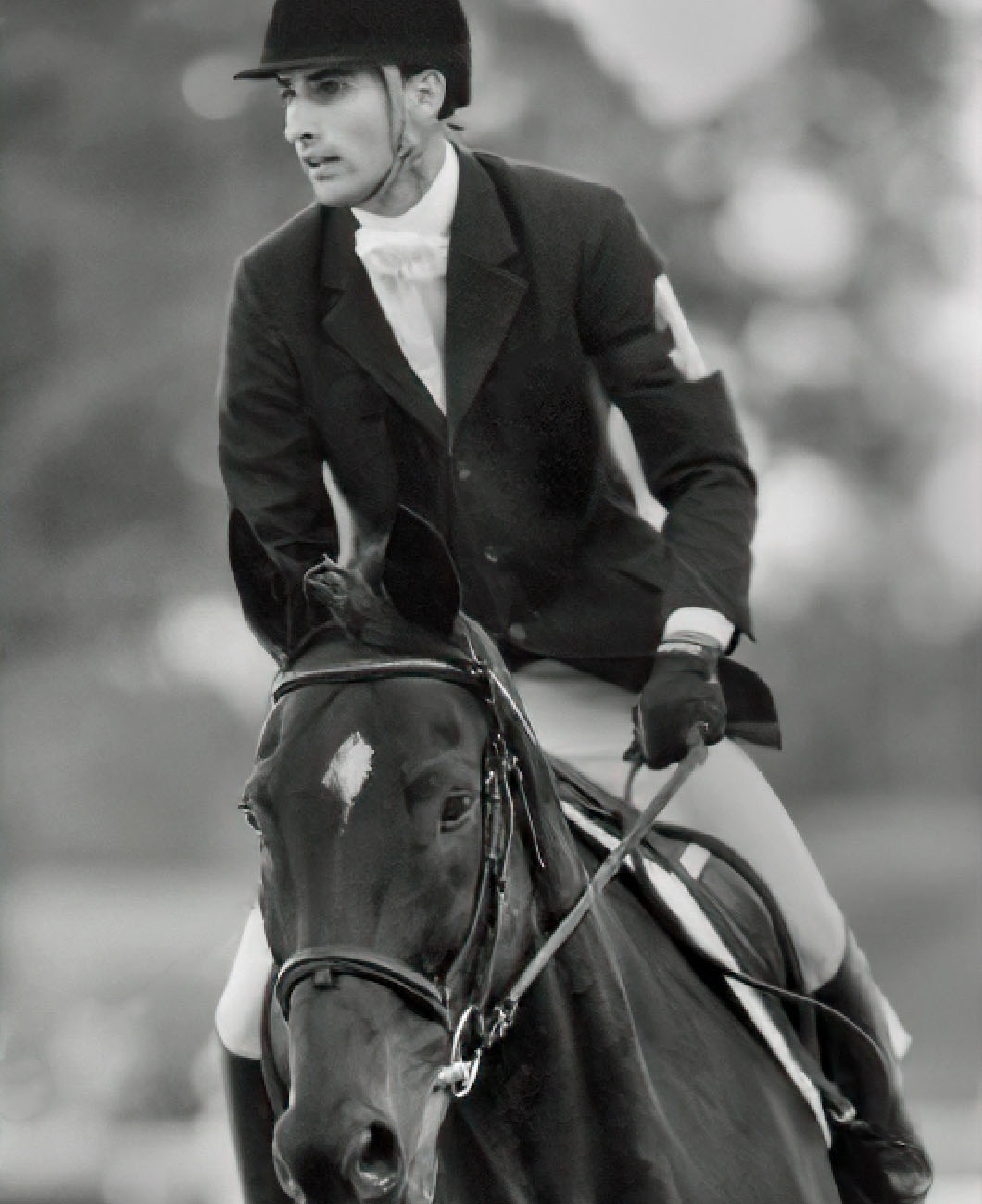Riyad Gandhy: Empathy is important
No one can perhaps talk about horses and their training as passionately as riding instructor and coach Riyad Gandhy. He takes LA POLO on an insightful journey of the intricacies of training horses

What inspired coach Riyad Gandhy to take up Equine Sciences at Otterbein University? “I was attending the Kodaikanal International School at the time, and it was getting to the point where my classmates were all starting to decide where to apply to college. As soon as I found out that there were colleges that had full-fledged Equine Science Departments, I knew that it was what I wanted to pursue,” he says. He spent more than two years at the university after his graduation as riding instructor.
Naturally, that had a major impact on his outlook towards horses. “It is not only what I learnt in those four years of college, but what I have learned from a few amazing veterinarians, therapists, farriers, dentists, trainers and behaviorists that I’ve worked with along the way over the past 25 years that has affected my outlook,” he says.
From his years of experience, Gandhy addresses a rather difficult question of whether riding in can harm horses. “It’s not always about the simple act of riding, recreational or competitive, is not injurious to horses, however it CAN be injurious, either physically or mentally if done improperly and without in the interest of the horse in mind. It is not about ‘what’ you do, but ‘how’ you do it. It would also depend on factors such as age/maturity of the horse, soundness, suitability of the horse to its discipline/rider, skill of the rider/trainer, and most importantly the skill and training philosophy of the rider/trainer.”

He emphasizes the importance of the training process, “Some sports can be very demanding for the horse, but if the training involves patience, clarity, and allows the horse to progress gradually and systematically by mastering small achievable steps, then the horse can be fully prepared to meet that demand without them being adversely affected.”
Riders, too have a vital responsibility “as they are responsible for the well-being of another living, sensitive being. If a rider understands that we have taken the horse out of its natural environment and placed it in a man-made setting that is not always ideal for horses, then they should feel the weight of that responsibility and treat it as such,” says Gandhy.
Largely the onus is on the rider or owner of caring for the horses but luckily for the horses, it’s more than individual efforts. “Governing bodies of equestrian sports have a responsibility to keep abuse to a minimum. The international governing body FEI has come a long way in recent years to minimize abuse of the horse by making several new rules that protect the horse’s well-being. However, more can always be done to improve these efforts. It is the Stewards at competitions that enforce these rules, and they should be highly trained and well paid. Riders should encourage and champion these efforts even if it means slightly higher entry fees. However, in countries where the National Federation does not prioritize the welfare of the horse…there is minimal random drug testing of the horse, minimal steward presence & enforcement of rules, there will unfortunately be more occurrences of abuse.”

Gandhy advocates the necessity of a training philosophy and elucidates this for LA POLO. “A Training Philosophy is a combination of one’s ideas and views about horses, riders and learning. It can be a set of rules or principles, and yes, Equine Behaviour (horse psychology) plays a large role in formulating some of these principles. I believe a training philosophy is not something stagnant; rather, it should be constantly evolving based on new ideas that may be better than older ones.” He even shared a few aspects of his own training philosophy:
• Have patience in your training of horse and rider. Train the basics correctly and thoroughly. Moving up the levels too fast just because you have achieved a basic level of competency at the lower levels is a path that unfortunately too many young riders take. If one builds a solid foundation, they will go far. For riders in disciplines such as jumping, polo, flatwork is essential to developing correct techniques, feel, a good seat, independence of the aids etc.
•Make sure your horse is on the path of learning to carry themselves in self-carriage, with relaxation, and respond to lighter and lighter aids. Horses should be trained to respond to quieter aids. Ultimately, the rider should barely have to think about asking the horse to do something with the horse immediately picking up on the ultra-subtle aids of the rider. This puts in place the conditions where it’s possible for the horse to relax while working because the rider is not forceful or shouting with the aids (which causes tension). Also, proper flatwork is essential, as it teaches horses to carry themselves properly, and develop strength in their topline. This will ensure that the rider’s weight is properly dissipated through the entire musculature of the horse.
• Have a strong team of professionals work with your horse. A chain is only as strong as its weakest link. It doesn’t matter how good your training is, your vet is…. if you have a bad farrier. And likewise, it doesn’t matter how good your farrier, vet, training is if you have bad nutrition. Everything is interlinked with horses and having highly competent professionals is essential to success with horses.
• Never accept the commonly heard excuse about a horse: “that’s just how he is”, it is important to interpret the signs; it could be pain, environmental, a learned behaviour etc, but those are signs of an unhappy/fearful horse who is not OK with their environment.”
How does he accommodate horse psychology in his training?
“All horses (and riders) are unique,” he says. “Don’t have cookie cutter systems in place that force all horses to follow the same regimen or timeframe for progress. Not all horses may like the job they are being asked to perform. Be open to that instead of forcing a square peg into a round hole. Being open to different methods of training is important as different horses may benefit from these different methods that still stay true to one’s philosophy.”
Being the methodical person he is, Gandhy volunteers a graph to explain himself further the success and therefore the need of an effective training philosophy.
Speaking of how all these years spent in the company of equines have evolved his understanding of them, he says: “My experience at a young age revolved more around the passion and thrill of riding. Unfortunately, I didn’t spend much time at all learning about the care and management of horses and learned nothing about what was done behind the scenes to get the horse ready to ride. Most of the experience I had handling horses on the ground came from my frequent weekend trips to Alibag, where my friend Zane had several ponies we would hang out with all day. My knowledge of riding was mostly mechanical, I understood a bit about the what to dos, but was never really taught the ‘why’ to do it.”
When we are talking about horse psychology and alternative training methods, natural horsemanship inevitably enters the conversation. Gandhy says: “Just like other disciplines of riding, you will find Natural Horsemanship done very well by some, and done badly by others. It began with some very skilled and gentle horsemen such as Tom Dorrance who advocated for methods based on communication, understanding and partnership. This was a stark contrast to the methods used by several cowboys of the time, that involved harsh, overpowering methods.”
However, as popularity of some of these methods grew, other economic driving factors led to people needing to differentiate themselves from other Natural Horsemanship practitioners, leading them to invent new theories, explanations and in some cases, gimmicks.
Gandhy shares with LA POLO his opinion of the controversial horse whispering. “Like the term ‘Natural Horsemanship’, where very little about it is actually ‘natural’, the term ‘Horse Whisperer’ is also loosely thrown around and used to label people that may achieve a desired result with a horse. The term probably came about by laypersons not recognizing the subtle aids that are usually involved with good horse training. So, the trainer knows about the technicalities of the interaction he/she is having with the horse, but to the onlooker, it may look like the horse is almost magically doing as the trainer asks.”
What is his message for instructors as well as equestrians? “Firstly, I believe that the majority of us riders and trainers are on a path looking for better alternatives for our horses, be it their comfort, nutrition, management or training. We have all taken up the sport because we are passionate about horses and genuinely have the best of intentions towards them. However, you know the saying about having the best intentions. These intentions will only be fulfilled if they are paired with (correct) knowledge. …With horses, learning and gaining knowledge never stops over one’s lifetime. It is important that we never feel satisfied with what we know as this will lead to stagnation.
Emphasising on the need for correct role models, he sums up: “The desire to seek knowledge is not enough. One’s path is dictated by where or whom the knowledge is gained from. If you go to the wrong source for information, you can easily go down the wrong path. We should strive to learn from those that have not only been successful, but those that have achieved success doing things the right way.

